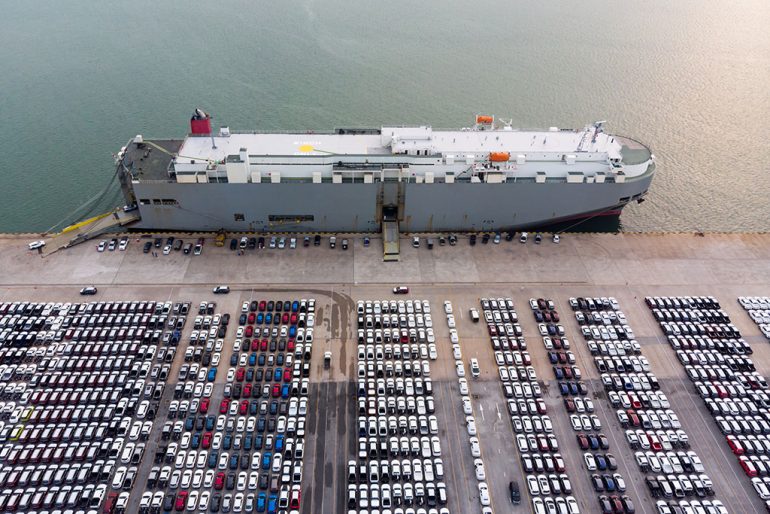
The automotive industry is once again bracing for potential upheaval as President Donald Trump has signaled his intent to impose a 25% tariff on imported vehicles. While the final details are set to be revealed on April 2, the mere possibility of these tariffs has already sparked concerns across the global automotive market. If implemented, these duties could significantly alter the cost of imported cars for American consumers and reshape the way automakers conduct business internationally.
What Would a 25% Tariff on Imported Cars Mean?
Simply put, tariffs act as a tax on imported goods. In this case, a 25% tariff on imported vehicles would directly increase the cost of cars brought into the United States from countries like Germany, Japan, South Korea, and others. Automakers would face two primary options—absorb the cost and reduce their margins or pass the additional expense onto consumers. History suggests that most, if not all, of this cost would likely be passed along, resulting in noticeably higher sticker prices.
For context, under current regulations, the U.S. imposes a 2.5% tariff on imported passenger cars and a hefty 25% tariff on imported light trucks. This truck tariff, often referred to as the “Chicken Tax,” has been in place since the 1960s and is part of the reason why pickup trucks manufactured outside North America are rare in the U.S. market.
Applying a similar 25% duty across all imported vehicles would drastically increase prices on popular models from brands like BMW, Mercedes-Benz, Toyota, Honda, Volkswagen, and Hyundai. For example, a $40,000 imported SUV could suddenly cost $50,000 or more, depending on how the manufacturer chooses to handle the tariff.
Which Cars Would Be Most Affected?
Luxury brands and European automakers would feel the brunt of these tariffs. BMW, Mercedes-Benz, Audi, and Porsche rely heavily on imports, and their vehicles would see some of the steepest price hikes. Even Japanese brands like Toyota and Honda, which produce many vehicles in the U.S., still import several models from Japan and other countries, meaning those specific vehicles could also see price increases.
Electric vehicles (EVs) could be hit especially hard, as many EV makers, including brands like BMW, Volvo, and Polestar, import a significant portion of their models. This could slow down the already delicate progress toward EV adoption in the U.S.
Could Domestic Automakers Benefit?
On paper, domestic automakers like Ford, General Motors, and Stellantis could benefit as their products may become relatively more affordable compared to imported competitors. However, the reality is more complex. Many parts used in American-made vehicles are sourced globally, and tariffs could also drive up the cost of components. This would ultimately affect the price of vehicles assembled in the U.S. as well.
Additionally, American automakers still depend on the global market. Tariffs could invite retaliation from trading partners like the European Union and Japan, which might impose their own duties on U.S. exports. This could damage American automakers’ international business, reducing their competitiveness abroad.
How Would Consumers Feel the Impact?
If tariffs are implemented, car buyers in the U.S. would likely experience:
- Significantly Higher Prices: Imported cars could see price hikes of $5,000 to $15,000, depending on the vehicle.
- Fewer Choices: Automakers may reduce the number of imported models offered in the U.S. to avoid tariffs, limiting consumer options.
- Longer Wait Times: Manufacturers may scramble to relocate production to North America, but such shifts take years. In the interim, supply constraints could lead to longer wait times and even higher prices.
- Used Car Price Inflation: When new cars become more expensive, demand for used vehicles typically increases, driving up prices across the board.
What Happens Next?
While the 25% tariff announcement is scheduled for April 2, it is far from guaranteed that the measure will be implemented as proposed. Trump made similar threats during his first term in 2018 and 2019 but ultimately held back after facing resistance from automakers, business leaders, and international allies. This time, however, Trump appears more determined, having already imposed a 10% tariff on all Chinese imports and announced duties on steel, aluminum, and other goods.
Key meetings between U.S. and EU trade officials could determine whether a last-minute agreement can prevent the tariffs. The European Union has already indicated it would consider lowering its own 10% car import duty, though no formal agreement has been reached.
Prepare for Price Shocks
Whether these tariffs come to pass or not, the uncertainty alone is enough to create ripples across the automotive industry. Consumers thinking about purchasing a new vehicle—especially an imported one—may want to act sooner rather than later. Automakers, on the other hand, are bracing for potential disruption, knowing that the global automotive landscape could be on the verge of a seismic shift.
If the 25% auto tariff becomes reality, the sticker shock at dealerships could be just the beginning.
FOLLOW US TODAY:

